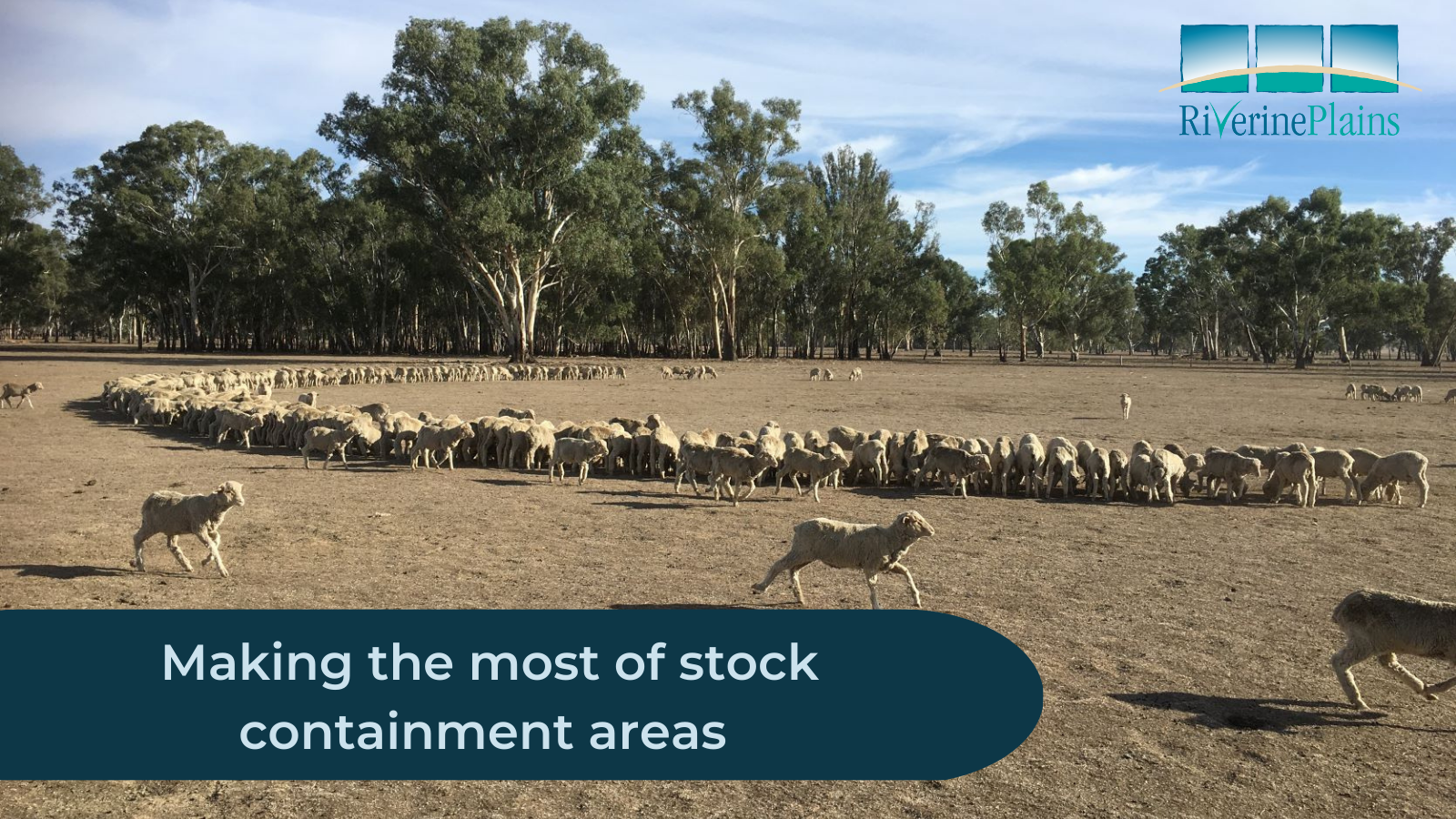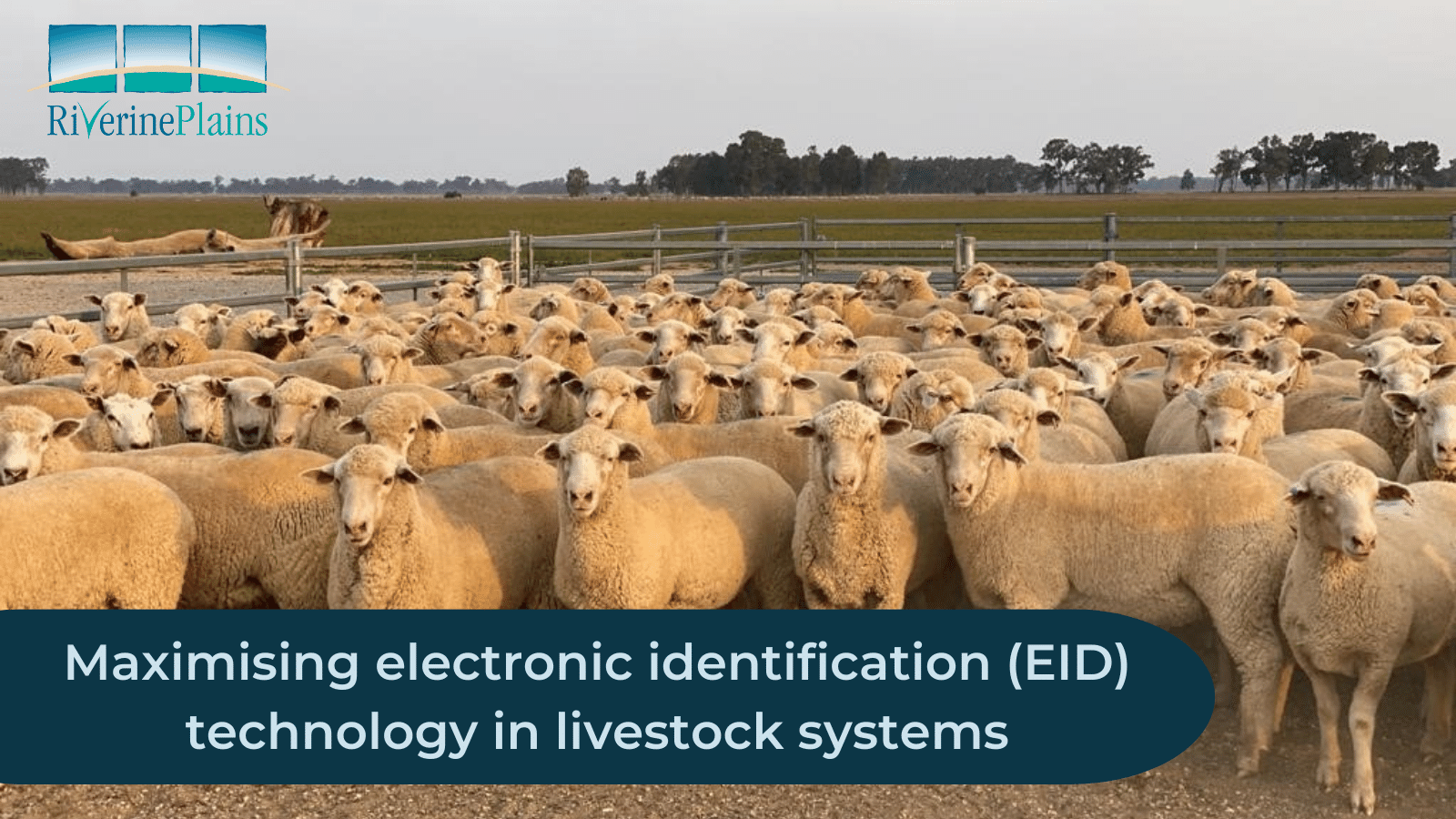Using stock containment areas to maximise production

Key Messages
- Containment areas allow improved management of animal condition, feed utilisation, pasture persistence and soil health, particularly during dry periods.
- The areas can be as simple or automated as you like - know its purpose within your farming system, consult with others and use resources available to determine design.
- Feed budgeting and knowing the quality of feed is important.
- Maintaining animal health is critical - drainage is very important, control dust, water quality, quantity and temperature and provide shade.
- Consider using Agriculture Victoria disease testing services.
Benefits of stock containment areas
When under pressure during dry periods, we need to protect the key drivers of production in our farming systems – soil and pasture. By alleviating grazing pressure when feed shortages arise, pasture persistence and soil health are maintained rather than degraded, allowing for a faster recovery when it does rain.
Keeping stock off the pastures initially following the autumn break is important for allowing sound establishment prior to grazing to create an effective feed wedge. Stock condition can also be better managed and, therefore, maintained in containment areas. It is important to understand the trigger points for when to take stock into and out of containment areas to boost pasture performance and profitability.
Setting up a stock containment area
Use of stock containment areas allows livestock farms to maximise productivity, adaptability and profitability across a range of seasonal conditions.
Containment areas help maintain ground cover and stock condition during late summer and autumn before the break. They can be used for multiple other purposes such as controlling stock condition prior to lambing/calving, joining, weaning and grazing management.
Before you plan your containment area you need to understand what the purpose of your containment area is. Is it solely to contain animals during dry periods, or to feedlot animals at other times as well? If you're going to set up a containment area have a look around, talk to other farmers who have one, seek advice from an advisor and use the resources available through Agriculture Victoria.
Your design can be as simple or as automated as you like - plan it around the equipment you have or plan to buy.
When deciding on the location consider:
- Drainage, particularly when you want to contain stock until after the autumn break. Feeding on the ground in wet conditions will lead to poor utilisation, which will adversely affect livestock and your gross margins.
- Accessibility for stock entry and exit and vehicles including tractors and for stock entry and exit.
- Proximity to water and feed supplies (silos and hay sheds).
- Regulations – e.g. minimum distances from waterways and neighbours' boundaries.
Getting the most from your stock containment area
Containment areas should be used for both ‘defence’ - preserving soil cover and pasture stands during dry times, and ‘attack’- using pasture growth after the autumn break.
A critical aspect of optimal stock performance is maintaining animal health therefore it is important to monitor and manage:
- Dust by controlling stocking rate. Aim for one sheep per 5m2 and avoid misters as they will increase humidity which may cause heat stress.
- Feet heath - ground condition, good drainage and soil type are important factors to consider.
- Water quality, quantity, flow rate and temperature.
- Feed quality and quantity - energy, protein, roughage, and nutrients (particularly monitor vitamin A and E deficiency) and ensure feed changes are gradual.
- Temperature – provide adequate shade. Any planted or existing trees need to be protected from ringbarking. Shade cloths can be used as alternatives to trees.
- Worms - perform faecal egg counts for targeted treatment.
Agriculture Victoria provides disease testing services to ensure quick and accurate diagnosis of diseases which allow for targeted treatment and future prevention.
Feed and Nutrition
Feed budgeting and knowing the quality of the feed by conducting feed tests is vital for maximising performance and reaching potentials. Group stock in tight weight ranges to allocate feed accurately. When feeding pregnant ewes, make sure they are entering the containment area with body scores of at least 3.0, and group singles and multiples separately and feed accordingly.
Aim for ewes to have a score of 2.7-2.8 at lambing to minimise the risk of dystocia, preg tox and other conditions related to over/under nutrition pre-lambing. In addition, timing of lambing is key to align the greatest feed demand with greatest feed supply throughout the year.
Not only do containment areas assist in matching feed demand with supply, but confined sheep also have a 10-15% metabolisable energy advantage to grazing sheep due to decreased movement. Stock containment areas are valuable tools for maximising feed efficiency and therefore production during dry periods, overall, increasing adaptability during critical times.
Containment areas like all other areas of the farm, require management and decision making. Riverine Plains is hosting a series of ‘trigger point’ workshops next week. They will be facilitated by Cam Nicholson, an advisor at Nicon Rural Services, and a farmer. Cam says "It can be challenging to decide when livestock should go into a containment facility and when they should be let out. What factors should be considered and where do we get the information to make an informed decision?”
This short workshop will build a framework using local knowledge to help make these decisions, with the aim of having clearly defined trigger points around containment decisions.
The key outcomes for the day are building confidence on:
- understanding the value of using containment areas
- knowing when stock should be put into and taken out of containment areas for maximising pasture and stock performance
- decision making at critical times
For more information and to register please follow the links below:
Dookie 29th March Stock containment - trigger point workshop Dookie - Riverine Plains
Rutherglen 30th March Stock containment – trigger point workshop Rutherglen - Riverine Plains
Savernake 30th March Stock containment – trigger point workshop Savernake - Riverine Plains
Further Reading
Confinement feeding stock (nsw.gov.au)
Feedlot Design Manual | Meat & Livestock Australia (mla.com.au)
Livestock and animals courses | eLearning | Support and resources | Agriculture Victoria
Sheep diseases | Animal diseases | Biosecurity | Agriculture Victoria
Stock containment areas - more than just drought feeding - Local Land Services (nsw.gov.au)
What to consider before containment feeding | Meat & Livestock Australia (mla.com.au)


